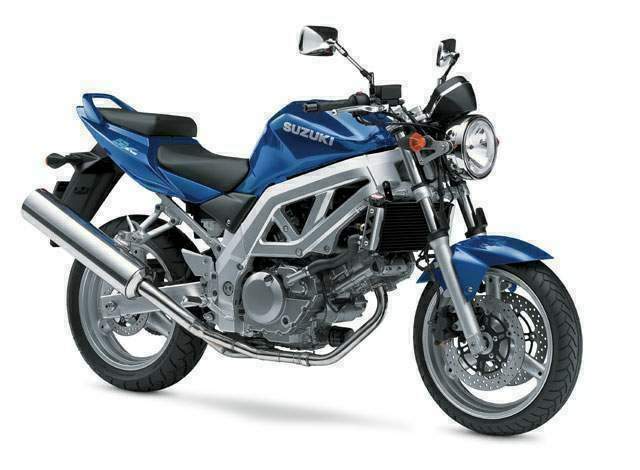
|
|
|
|
|
|
Classic Bikes
Custom Bikes
Individual
Racing Bikes AJP
AJS
Aprilia
Ariel
Avinton / Wakan
Bajaj
Benelli
Beta
Bimota
BMW
Brough Superior
BRP Cam-Am
BSA
Buell / EBR
Bultaco
Cagiva
Campagna
CCM
CF Moto
Combat Motors
Derbi
Deus
Ducati
Excelsior
GASGAS
Ghezzi Brian
Gilera
GIMA
Harley Davidson
Hero
Highland
Honda
Horex
Husaberg
Husqvarna
Hyosung
Indian
Jawa
Kawasaki
KTM
KYMCO
Laverda
Lazareth
Magni
Maico
Mash
Matchless
Mondial
Moto Guzzi
Moto Morini
MV Agusta
MZ / MuZ
NCR
Norton
NSU
Paton
Peugeot
Piaggio
Revival Cycles
Roland Sands
Royal Enfield
Sachs
Sherco
Sunbeam
Suzuki
SWM
SYM
Triumph
TVS
Ural
Velocette
Vespa
Victory
Vincent
VOR
Voxan
Vyrus
Walt Siegl
Walz
Wrenchmonkees
Wunderlich
XTR / Radical
Yamaha
Zero
Video
Technical
Complete Manufacturer List
|
Suzuki SV 650S
You know what you’re looking for in a standard V-twin machine: light and agile handling, along with willing-and-able engine performance. And that’s what the Suzuki SV650 delivers - in spades. Recently named as Cycle World magazine’s Best Standard Motorcycle and Motorcyclist magazine’s Best Bang for the Buck, the One ride on the SV650 and you’ll be hooked. It combines crisp, lightweight handling with all-day riding comfort. And the thrills really begin when you tap into its exceptional engine performance. Its fuel-injected V-twin powerplant offers crisp throttle response, strong torque and a stunningly wide powerband. NEW FEATURES: • Naked version SV650 with all-new frame,
electronic fuel injection and an exciting new look. KEY FEATURES: • Compact 645 cc, 90 degree liquid-cooled V-twin,
DOHC 8-valve engine tuned for strong low to mid rpm power.
2004 Honda 599 vs 2004 Suzuki SV650 vs 2004
Yamaha FZ6 Source Rider Magazine

|
|
|
Any corrections or more information on these motorcycles will be kindly appreciated. |